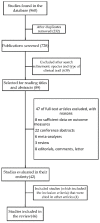Probiotics for the Treatment of Overweight and Obesity in Humans-A Review of Clinical Trials
- PMID: 32751306
- PMCID: PMC7465252
- DOI: 10.3390/microorganisms8081148
Probiotics for the Treatment of Overweight and Obesity in Humans-A Review of Clinical Trials
Abstract
The World Health Organization (WHO) reports that 400 million people are obese, and over 1.6 billion adults are overweight worldwide. Annually, over 2.8 million people die from obesity-related diseases. The incidence of overweight and obesity is steadily increasing, and this phenomenon is referred to as a 21st-century pandemic. The main reason for this phenomenon is an easy access to high-energy, processed foods, and a low-activity lifestyle. These changes lead to an energy imbalance and, as a consequence, to the development of body fat. Weight gain contributes to the development of heart diseases, skeletal system disorders, metabolic disorders such as diabetes, and certain types of cancer. In recent years, there have been many works linking obesity with intestinal microbiota. Experiments on germ-free animals (GFs) have provided much evidence for the contribution of bacteria to obesity. The composition of the gut microbiota (GM) changes in obese people. These changes affect the degree of energy obtained from food, the composition and secretory functions of adipose tissue, carbohydrate, and lipid metabolism in the liver, and the activity of centers in the brain. The study aimed to present the current state of knowledge about the role of intestinal microbiota in the development of obesity and the impact of supplementation with probiotic bacteria on the health of overweight and obese patients.
Keywords: Bifidobacterium; Lactobacillus; gut microbiota; obesity; overweight; probiotic.
Conflict of interest statement
The authors declare no conflict of interest.
Figures





References
-
- Higgins J.P.T., Altman D.G., Sterne J.A.C. In: Cochrane Handbook for Systematic Reviews of Interventions. Higgins J.P.T., Green S., editors. The Cochrane Collaboration; London, UK: 2011. Version 5.1.0. Chapter 8.
Publication types
LinkOut - more resources
Full Text Sources
Other Literature Sources

